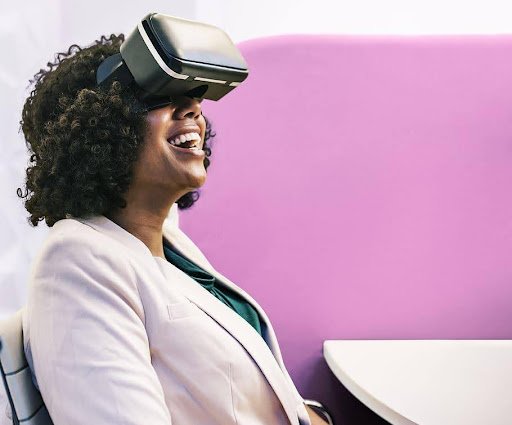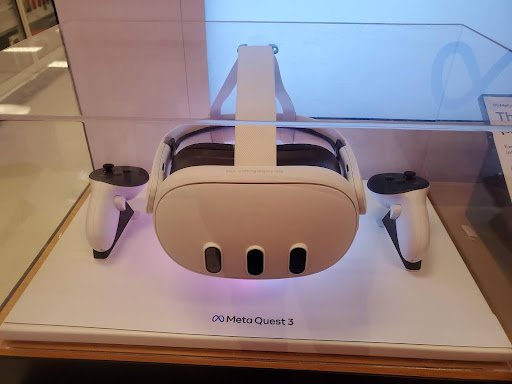VR offices refer to a setup of an office in virtual reality, through which we can experience work life in real-time. It is a 3D space that gives the illusion of a real office.
Not long ago, working from a beach in Bali or a mountain cabin sounded like a dream. Today, it is possible, and it is not just about Wi-Fi anymore. With the rise of VR offices, your entire workspace can travel with you. All you need is a headset. Sounds wild? Maybe. But it is already happening. It is changing the future of work, and even the 9-to-5 grind.
In simple terms, a VR office is a virtual space where people meet and work, much like a physical office, only everything happens inside a VR headset. Imagine putting on your headset in your living room and stepping into a spacious virtual boardroom. You look to your left, and your teammate from Germany is waving at you. To your right, someone from Mumbai is already scribbling ideas on the whiteboard.
It is no longer science fiction. Apps like Horizon Workrooms (by Meta) and Spatial are making this possible. You can join meetings, brainstorm with your team, or work quietly at your virtual desk. Your digital avatar moves as you move, talks as you talk, and helps make remote work feel less… remote.
To use a VR office, you will need a VR headset, something like the Meta Quest 2 or the HTC Vive. Once you are set up, you log into a platform like Horizon Workrooms or Glue. These apps create full 3D office environments like meeting rooms, auditoriums, or open workspaces. You can:
A design firm could use VR to show clients walk-throughs of architectural projects. Instead of 2D blueprints, clients “walk” inside the structure before it is built. Another startup can host its weekly stand-up meetings in VR without any hassles of commute, and Zoom fatigue, while being way more fun.

It is not just about being trendy. VR in the workplace comes with real advantages:
Better connection in remote teams
Working from different cities (or countries) can feel lonely. But VR brings back those casual “Hey, got a minute?” chats. You can walk over to a teammate’s desk or brainstorm in the same room, even if you are thousands of miles apart.
Improved focus
In a VR office, you are not distracted by laundry, kids, or random notifications. You are inside a dedicated space. That helps your brain shift into “work mode.”
Creative freedom
Want a peaceful forest as your office background? Or a floating office in space? With platforms like Engage or Virbela, you can design your dream office and still get work done.
Reduced costs
No office rent. No travel expenses. Just a headset and good internet. Startups and freelancers, in particular, are seeing the savings add up.
Like any new technology, VR in offices comes with challenges. For instance:
Still, many companies are working around these issues. Some offer hybrid options, a mix of VR sessions and traditional tools to ease the transition.

It is looking that way. We are not saying physical offices will vanish overnight. But VR offices offer something different, not just flexibility, but presence. You feel like you are part of something, even if you are halfway across the world. And with tools like Horizon Workrooms, Spatial, Engage, and Virbela improving fast, the gap between real and virtual is closing quickly.
If you are a remote-first company, a freelancer building your brand, or just someone tired of endless Zoom calls, maybe it is time to try a new kind of office. Put on a headset. Step inside. The future of work is waiting, and it might just surprise you.